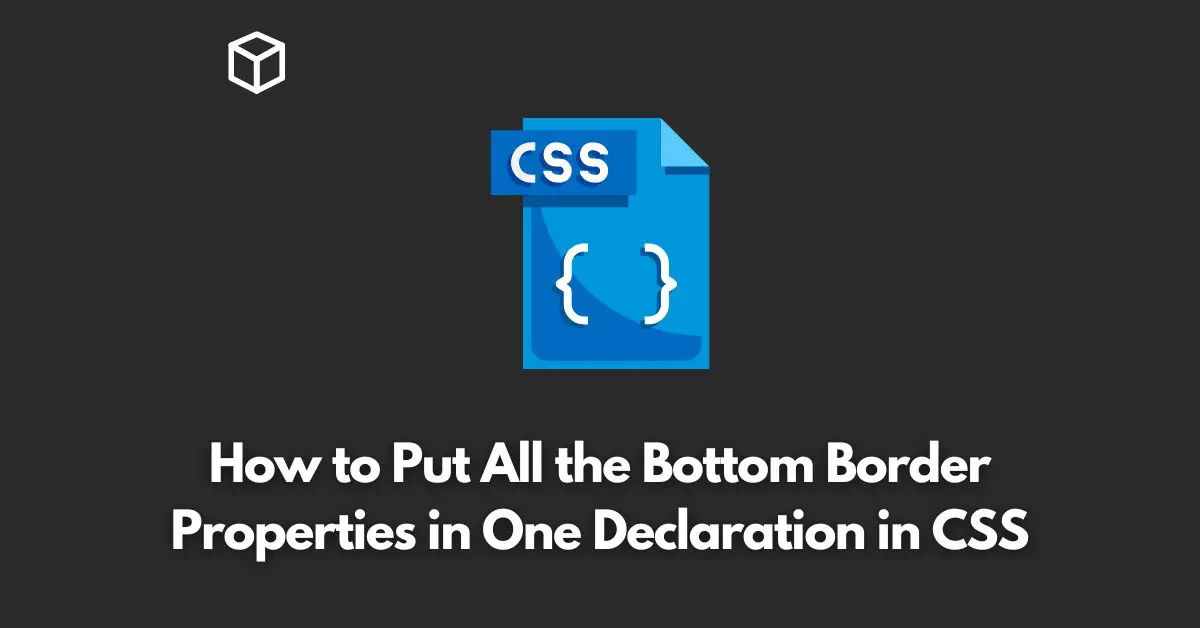In CSS, there are several properties that can be used to control the appearance of borders, including the width, color, and style of the border.
In this CSS tutorial, we will take a closer look at the different properties that can be used to control the bottom border of an element and how to group them together in one declaration.
The first property that we will look at is the “border-bottom-width” property.
This property controls the width of the bottom border of an element.
The width can be specified in pixels, ems, or percentages.
For example, if we want to set the bottom border of an element to be 2 pixels wide, we would use the following code:
element {
border-bottom-width: 2px;
}Next, we have the “border-bottom-color” property.
This property controls the color of the bottom border of an element.
The color can be specified using a named color, a hex code, or an RGB value.
For example, if we want to set the bottom border of an element to be red, we would use the following code:
element {
border-bottom-color: red;
}The final property that we will look at is the “border-bottom-style” property.
This property controls the style of the bottom border of an element.
There are several different styles that can be used, including solid, dotted, and dashed.
For example, if we want to set the bottom border of an element to be dotted, we would use the following code:
element {
border-bottom-style: dotted;
}Now that we have looked at each of these properties separately, let’s take a look at how we can group them together in one declaration.
This can be done using the “border-bottom” shorthand property.
This property allows us to specify the width, color, and style of the bottom border all in one line of code.
For example, if we want to set the bottom border of an element to be 2 pixels wide, red, and dotted, we would use the following code:
element {
border-bottom: 2px dotted red;
}As you can see, using the “border-bottom” shorthand property makes it much easier to control the bottom border of an element.
By grouping all of the properties together in one line of code, we can save time and make our CSS more readable.
In conclusion, the border-bottom shorthand property allows you to control the bottom border’s width, color, and style all in one line of code, making your CSS more readable and efficient.
It’s always a good practice to use shorthand properties wherever possible, as it makes your code more organized and easy to read.




